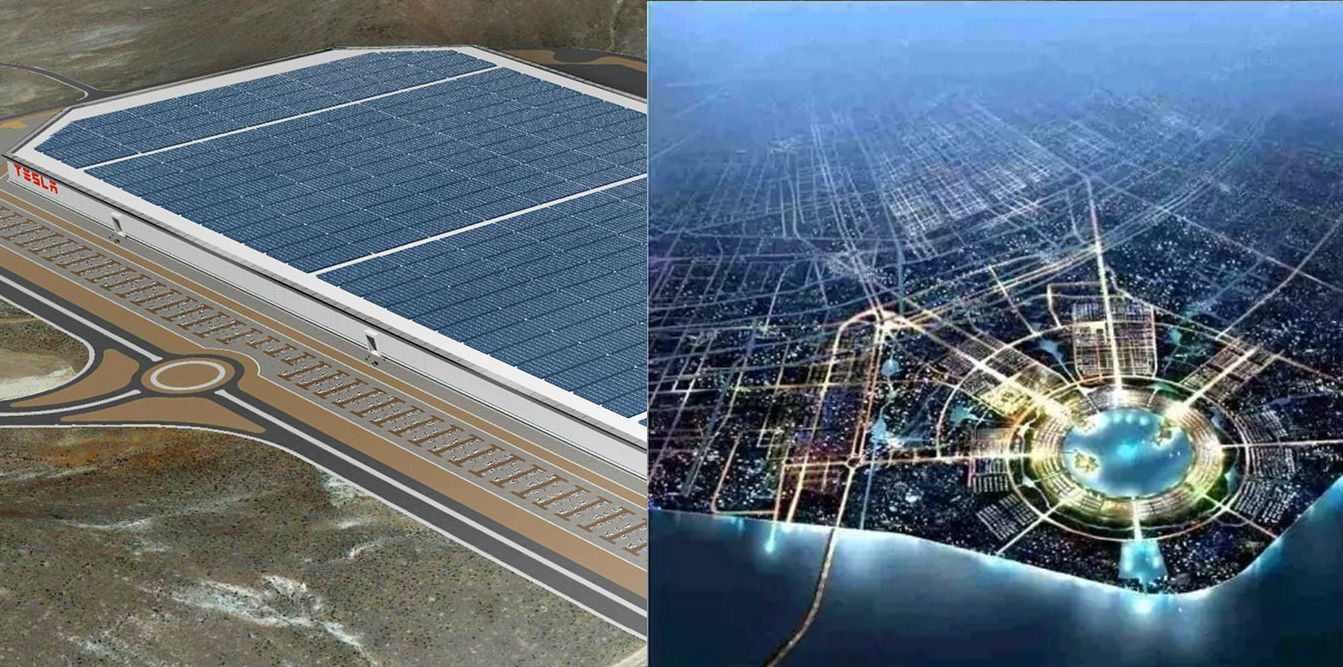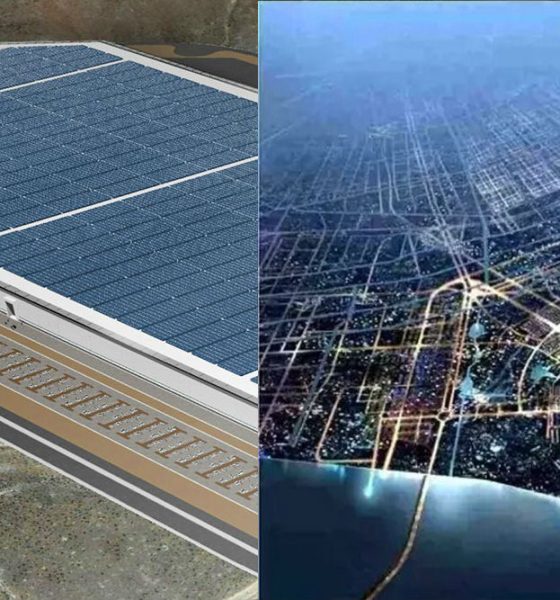

News
Tesla denies report on local battery partner for Gigafactory 3
The construction of Tesla’s Gigafactory 3 in China is moving in a rapid pace. Not long after the facility’s groundbreaking ceremony, the company’s 864,885-square meter plot of land in Shanghai’s Lingang Industrial Zone has become abuzz with activity. If recent reports are any indication, though, it appears that work is also underway to ensure that the company has all the partners it needs to produce batteries on the upcoming facility.
Citing individuals reportedly familiar with the proceedings, Reuters recently published a report suggesting that Tesla has reached a preliminary agreement with China-based battery provider Tianjin Lishen to supply batteries for Gigafactory 3. The publication’s sources have noted, though, that Tesla and Tianjin Lishen have reached no official, definitive deal as of date.
Among the details reportedly being worked out by Tesla and the battery supplier is the size of Tesla’s battery orders, as well as the specific size of the cells that would be produced in the Shanghai-based factory. Inasmuch as news of a possible battery supplier is compelling though, a Tesla spokesperson has denied that any official agreement between the electric car maker and the Chinese battery provider has been reached.
“Tesla previously received quotes from Lishen, but did not proceed further. We have not signed any agreement of any kind with them,” a Tesla spokesperson said.
Lishen, for its part, has noted that there is no agreement between itself and Tesla for Gigafactory 3’s batteries, at least for now.
The update suggested by Reuters’ sources point to Tesla tapping into the local Chinese market for a possible battery partner. So far, Tesla’s sole battery partner has been Panasonic, which has been producing the 18650 battery cells for the Model S and X in its Japan-based facilities, and the Model 3’s 2170 cells in Gigafactory 1 . Considering the size of the Chinese market, though, Panasonic’s resources would not be enough to meet the demand in the country. Elon Musk described this in a prior tweet.
Tesla will manufacture all battery modules & packs at China Giga, as we do today in California & Nevada. Cell production will be sourced locally, most likely from several companies (incl Pana), in order to meet demand in a timely manner.
— Elon Musk (@elonmusk) November 2, 2018
While reports of Tesla’s preliminary agreement with Tianjin Lishen are undoubtedly interesting, some aspects of the information provided by Reuters’ sources were a tad bit strange. For one, Elon Musk has stated that the first vehicle set to be produced in Gigafactory 3 is the Model 3, an electric car powered by 2170 cells. Despite Gigafactory 3 only producing the affordable versions of the electric sedan, it doesn’t make much sense for Tianjin Lishen and Tesla to be still undecided about the types of battery cells that would be needed for the upcoming facility.
If any, these recent reports of Tesla and it’s possible battery partner in China teases the accelerated pace of Gigafactory 3’s development and construction. The facility, after all, is currently following an incredibly ambitious timeline, with Tesla aiming to finish the initial construction of the factory by the end of summer. Tesla also aims to start producing the Model 3 before the end of 2019.
Perhaps the most notable factor in the construction of Gigafactory 3 though, is the apparent favor currently being extended to Tesla by the Chinese government. For one, Tesla was allowed to become the sole owner of Gigafactory 3 — a privilege not given to any other foreign carmaker operating in the country. Apart from this, Tesla was also granted low-interest loans from local Shanghai banks to fund part of the facility’s construction. China Construction Third Engineering Bureau Co., Ltd, the company tasked with the facility’s buildout, is also a subsidiary of China Construction, a government-owned company.

Elon Musk
Starlink achieves major milestones in 2025 progress report
Starlink wrapped up 2025 with impressive growth, adding more than 4.6 million new active customers and expanding service to 35 additional countries, territories, and markets.

Starlink wrapped up 2025 with impressive growth, adding more than 4.6 million new active customers and expanding service to 35 additional countries, territories, and markets. The company also completed deployment of its first-generation Direct to Cell constellation, launching over 650 satellites in just 18 months to enable cellular connectivity.
SpaceX highlighted Starlink’s impressive 2025 progress in an extensive report.
Key achievements from Starlink’s 2025 Progress
Starlink connected over 4.6 million new customers with high-speed internet while bringing service to 35 more regions worldwide in 2025. Starlink is now connecting 9.2 million people worldwide. The service achieved this just weeks after hitting its 8 million customer milestone.
Starlink is now available in 155 markets, including areas that are unreachable by traditional ISPs. As per SpaceX, Starlink has also provided over 21 million airline passengers and 20 million cruise passengers with reliable high-speed internet connectivity during their travels.
Starlink Direct to Cell
Starlink’s Direct to Cell constellation, more than 650 satellites strong, has already connected over 12 million people at least once, marking a breakthrough in global mobile coverage.
Starlink Direct to Cell is currently rolled out to 22 countries and 6 continents, with over 6 million monthly customers. Starlink Direct to Cell also has 27 MNO partners to date.
“This year, SpaceX completed deployment of the first generation of the Starlink Direct to Cell constellation, with more than 650 satellites launched to low-Earth orbit in just 18 months. Starlink Direct to Cell has connected more than 12 million people, and counting, at least once, providing life-saving connectivity when people need it most,” SpaceX wrote.
News
Tesla Giga Nevada celebrates production of 6 millionth drive unit
To celebrate the milestone, the Giga Nevada team gathered for a celebratory group photo.

Tesla’s Giga Nevada has reached an impressive milestone, producing its 6 millionth drive unit as 2925 came to a close.
To celebrate the milestone, the Giga Nevada team gathered for a celebratory group photo.
6 million drive units
The achievement was shared by the official Tesla Manufacturing account on social media platform X. “Congratulations to the Giga Nevada team for producing their 6 millionth Drive Unit!” Tesla wrote.
The photo showed numerous factory workers assembled on the production floor, proudly holding golden balloons that spelled out “6000000″ in front of drive unit assembly stations. Elon Musk gave credit to the Giga Nevada team, writing, “Congrats on 6M drive units!” in a post on X.
Giga Nevada’s essential role
Giga Nevada produces drive units, battery packs, and energy products. The facility has been a cornerstone of Tesla’s scaling since opening, and it was the crucial facility that ultimately enabled Tesla to ramp the Model 3 and Model Y. Even today, it serves as Tesla’s core hub for battery and drivetrain components for vehicles that are produced in the United States.
Giga Nevada is expected to support Tesla’s ambitious 2026 targets, including the launch of vehicles like the Tesla Semi and the Cybercab. Tesla will have a very busy 2026, and based on Giga Nevada’s activities so far, it appears that the facility will be equally busy as well.
News
Tesla Supercharger network delivers record 6.7 TWh in 2025
The network now exceeds 75,000 stalls globally, and it supports even non-Tesla vehicles across several key markets.

Tesla’s Supercharger Network had its biggest year ever in 2025, delivering a record 6.7 TWh of electricity to vehicles worldwide.
To celebrate its busy year, the official @TeslaCharging account shared an infographic showing the Supercharger Network’s growth from near-zero in 2012 to this year’s impressive milestone.
Record 6.7 TWh delivered in 2025
The bar chart shows steady Supercharger energy delivery increases since 2012. Based on the graphic, the Supercharger Network started small in the mid-2010s and accelerated sharply after 2019, when the Model 3 was going mainstream.
Each year from 2020 onward showed significantly more energy delivery, with 2025’s four quarters combining for the highest total yet at 6.7 TWh.
This energy powered millions of charging sessions across Tesla’s growing fleet of vehicles worldwide. The network now exceeds 75,000 stalls globally, and it supports even non-Tesla vehicles across several key markets. This makes the Supercharger Network loved not just by Tesla owners but EV drivers as a whole.
Resilience after Supercharger team changes
2025’s record energy delivery comes despite earlier 2024 layoffs on the Supercharger team, which sparked concerns about the system’s expansion pace. Max de Zegher, Tesla Director of Charging North America, also highlighted that “Outside China, Superchargers delivered more energy than all other fast chargers combined.”
Longtime Tesla owner and FSD tester Whole Mars Catalog noted the achievement as proof of continued momentum post-layoffs. At the time of the Supercharger team’s layoffs in 2024, numerous critics were claiming that Elon Musk was halting the network’s expansion altogether, and that the team only remained because the adults in the room convinced the juvenile CEO to relent.
Such a scenario, at least based on the graphic posted by the Tesla Charging team on X, seems highly implausible.








